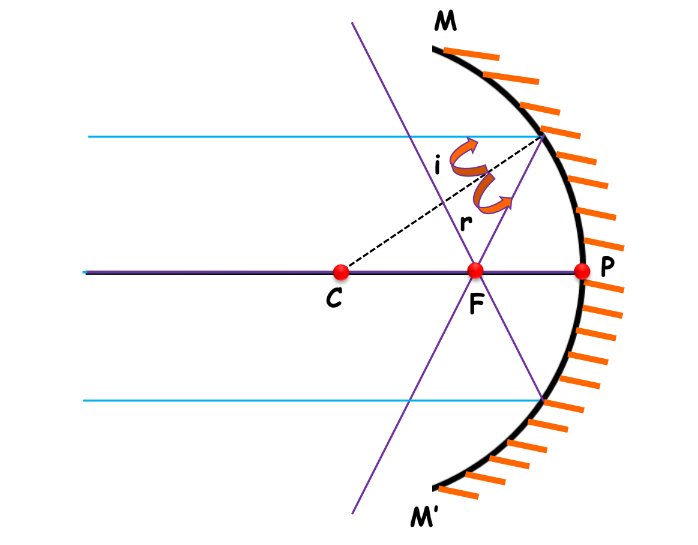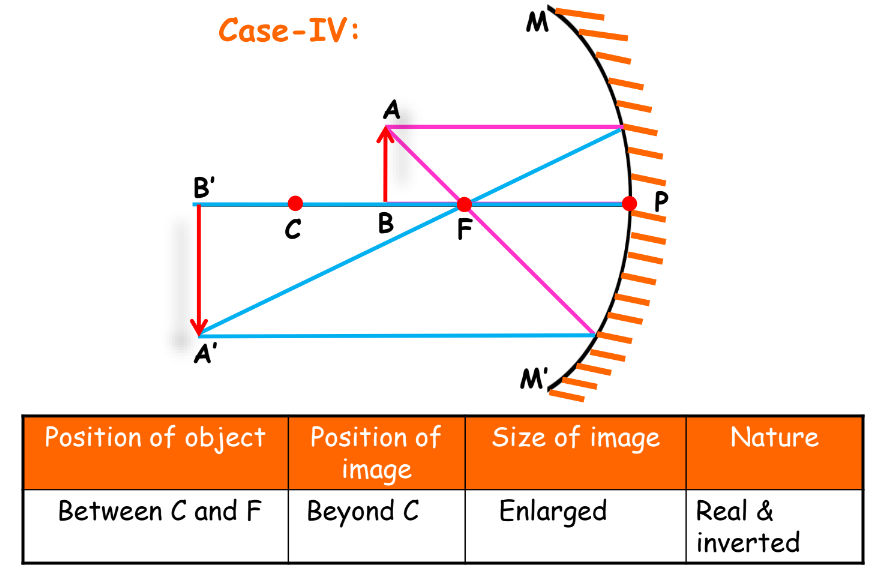Light – Reflection and Refraction – The Best Guide For Class 10 Science Chapter 9
Welcome to iPrep, your Learning Super App. Our learning resources for the chapter, Light – Reflection and Refraction in Science for Class 10th are designed to ensure you grasp this concept with clarity and perfection. Whether studying for an upcoming exam or strengthening your concepts, our engaging animated videos, practice questions and notes offer you the best-integrated learning with interesting explanations and examples.
Objectives of Learning Light – Reflection and Refraction
The primary objective of studying Light – Reflection and Refraction in Class 10 Science is to understand the fundamental properties of light and how it interacts with various surfaces and mediums. Through this chapter, students will learn about the laws governing reflection and refraction, the formation of images by mirrors and lenses, and their real-world applications. Grasping these concepts not only enhances problem-solving skills but also builds a foundation for advanced topics in physics, such as optics and wave theory.
Introduction to Light
Light is one of the most fascinating and essential forms of energy that we encounter in our daily lives. It allows us to see the world around us, but its role goes far beyond just vision. In this section of the chapter Light – Reflection and Refraction, we’ll explore the nature of light, how it travels, and how it interacts with different materials. Understanding light is crucial for studying various optical phenomena such as reflection, refraction, and image formation, all of which are integral to this chapter. Here are some facts about light.
- Light is a form of energy. It is emitted in the form of radiation.
- Range of wavelength of visible light waves: 400 –700 nm.
Propagation of Light
The chapter Light – Reflection and Refraction gives a thorough understanding of the propagation of light. This includes –
Absorption
When light encounters an object, it can be absorbed by the material. This absorbed energy can be converted into heat or other forms of energy.
Transmission
Light can also pass through a material, a process known as transmission. Transparent materials like glass allow light to pass through with minimal absorption.
Reflection
Reflection occurs when light bounces off the surface of an object. This is the principle behind how we see objects that don’t emit light themselves.

Reflection of Light
Reflection of light is the phenomenon that allows us to see the world around us. As stated in the chapter Light – Reflection and Refraction, when light strikes a surface, it bounces back, enabling us to perceive objects that do not emit their light. It is the process of sending back the light rays that fall on the surface of an object. Silver is one of the best reflectors of light. This process follows specific laws and principles, which are fundamental to understanding how mirrors work and how images are formed. Let’s dive into the key aspects of reflection and explore how it governs everyday experiences and optical devices.
Laws of Reflection of Light

- The angle of incidence is equal to the angle of reflection.
- The incident ray, the normal to the mirror at the point of incidence, and the reflected ray lie in the same plane.
Types of Images
Within the chapter Light – Reflection and Refraction, there is a mention of 2 types of images formed by the reflection of light. These include-
- Real Image: Formed when light rays from an object intersect after reflection from a mirror. Real images can be obtained on a screen.
- Virtual Image: Formed by the extrapolation of light rays from an object. Virtual images cannot be obtained on a screen.
Characteristics of Images Formed by Plane Mirrors
- Virtual, erect, and laterally inverted.
- Formed at the same distance behind the mirror as the object is in front.
- The same size as the object.
Spherical Mirrors
Types of Spherical Mirrors
- Concave (Converging) Mirror: The reflecting surface curves inwards.

- Convex (Diverging) Mirror: The reflecting surface bulges outwards.

Rules for Obtaining Images from Convex Mirrors
Rule 1
A ray of light parallel to the principal axis appears to diverge from the focus after reflection.
Rule 2
A ray of light going towards the center of curvature is reflected along the same path.
Image Formation by Convex Mirror
| Position of Object | Position of Image | Size of Image | Nature |
| Anywhere between P & Infinity | Behind the mirror, b/w P & F | Diminished | Virtual & erect |
| At infinity | Behind the mirror at F | Highly diminished | Virtual & erect |

Uses of Convex Mirrors
Convex mirrors are commonly used as rear-view mirrors in automobiles because they always produce erect images and provide a wider field of view.
Rules for Obtaining Images from Concave Mirrors
Rule 1
A ray of light parallel to the principal axis passes through the focus after reflection.
Rule 2
A ray of light passing through the center of curvature is reflected along the same path.
Rule 3
A ray of light passing through the focus becomes parallel to the principal axis after reflection.
Image Formation by Concave Mirror
| Position of Object | Position of Image | Size of Image | Nature |
| At infinity | At the focus F | Highly diminished | Real & inverted |
| Beyond C | Between F and C | Diminished | Real & inverted |
| At C | At C | Same size | Real & inverted |
| Between C and F | Beyond C | Enlarged | Real & inverted |
| At F | At infinity | Highly enlarged | Real & inverted |
| Between F & P | Behind the mirror | Enlarged | Virtual & erect |





Uses of Concave Mirrors
Concave mirrors are used:
- As shaving mirrors.
- As reflectors in car headlights, searchlights, table lamps, torches, etc.
- By doctors to examine eyes, ears, teeth, etc.
- In solar furnaces.
Sign Convention
- Positive Distances: Measured in the direction of incident light.
- Negative Distances: Measured against the direction of incident light.
- Upward Heights: Taken as positive.
- Downward Heights: Taken as negative.
Refraction of Light
Refraction is the change in direction of light when it travels from one medium to another. The speed of light is reduced in denser media and is higher in optically rarer media.


Refraction through a glass slab


Laws of Refraction
- The incident ray, the refracted ray, and the normal to the interface of two media at the point of incidence all lie in the same plane.
- The ratio of the sine of the angle of incidence to the sine of the angle of refraction is constant for light of a given color and a given pair of media.
Refractive Index
The refractive index of a medium is a measure of its light-bending ability.

Lenses
Types of Spherical Lenses
- Convex Lens: Thicker at the center and thinner at the edges.

- Concave Lens: Thinner in the middle and thicker at the edges.

Rules for Forming Images by Convex Lens
Rule 1
All the rays parallel to the principal axis of a convex lens pass through the focus on the other
side of the lens after refraction.
Rule 2
The ray passing through the optical center of a lens goes straight after refraction through the lens.
Rule 3
The ray passing through the focus of the lens becomes parallel to the principal axis after
refraction through the lens.
Image Formation by Convex Lens
As covered in the chapter Light – Reflection and Refraction, there are various ways in which images are formed in a convex lens, as shown in the table below-
Position of Object
Position of Image
Size of Image
Nature
Between F1 & O
On the same side as object
Enlarged
Virtual & erect
At F1
At infinity
Highly enlarged
Real & inverted
Between F1 & 2F1
Beyond 2F2
Enlarged
Real & inverted
At 2F1
At 2F2
Same size
Real & inverted
Beyond 2F1
Between F2 & 2F2
Diminished
Real & inverted
At infinity
At F2
Highly diminished
Real & inverted





Rules for Forming Images by Concave Lens
Rule 1
All the rays parallel to the principal axis of a concave lens appear to diverge from the focus after refraction through the lens.
Rule 2
A ray passing through the optical center of a concave lens goes straight after passing through the lens.
Image Formation by Concave Lens
| Position of Object | Position of Image | Size of Image | Nature |
| At infinity | At F1 | Highly Diminished | Virtual & erect |
| Anywhere b/w O & Infinity | Between O & F1 | Diminished | Virtual & erect |

Power of a Lens
According to the chapter Light – Reflection and Refraction, the power of a lens is a measure of its ability to converge or diverge light rays. The SI unit of power is the dioptre (D).

- Convex Lenses: Positive power.
- Concave Lenses: Negative power.
Important Formulas
Some extremely important formulas from the chapter Light – Reflection and Refraction are as follows –
Mirror Formula

Magnification Formula for Mirrors

Lens Formula

Magnification Formula for Lenses

Power of a Lens

Important Definitions
Some important definitions from the chapter Light – Reflection and Refraction are as follows-
- The angle of incidence: The angle between the incident ray and the normal.
- The angle of reflection: The angle between the reflected ray and the normal.
- The angle of refraction: The angle between the refracted ray and the normal.
- Centre of curvature: It is the center of the hollow sphere of a glass of which the mirror is a part.
- The radius of curvature: It is the radius of the hollow sphere of a glass of which the mirror is a part.
- Pole: It is the center of a spherical mirror.
- The angle of incidence: The angle between the incident ray and the normal.
- The angle of reflection: The angle between the reflected ray and the normal.
- The angle of refraction: The angle between the refracted ray and the normal.
- Centre of curvature: It is the center of the hollow sphere of glass of which the mirror is a part.
- The radius of curvature: It is the radius of the hollow sphere of glass of which the mirror is a part.
- Pole: It is the center of a spherical mirror.
- Linear Magnification: The ratio of the height of the image to the height of the object is known as linear magnification. It is also defined as the ratio of the image distance to the object distance.
If you liked this summary and want to read a similar post on Class 10 Science Chapter 7 – How Do Organisms Reproduce?, click here.
Conclusion
Understanding the principles of light, its behavior in different media, and the associated mathematical formulas is crucial for mastering the topic of electricity. This chapter provides the foundational knowledge necessary for further studies in physics and its applications in real life.
In conclusion, mastering the concepts of Light – Reflection and Refraction is essential for building a strong foundation in physics, especially for CBSE Class 10 Science students. This chapter covers the intricate behavior of light, whether it’s reflection from mirrors or refraction through lenses. By thoroughly understanding Light – Reflection and Refraction, you equip yourself with the knowledge to solve real-world optics problems. At iPrep, we ensure that learning these concepts is not only effective but also engaging, making Light – Reflection and Refraction simpler and more interesting to study.
Practice questions on Chapter 9 - Light - Reflection and Refraction
Get your free Chapter 9 - Light - Reflection and Refraction practice quiz of 20+ questions & detailed solutions
Practice Now








